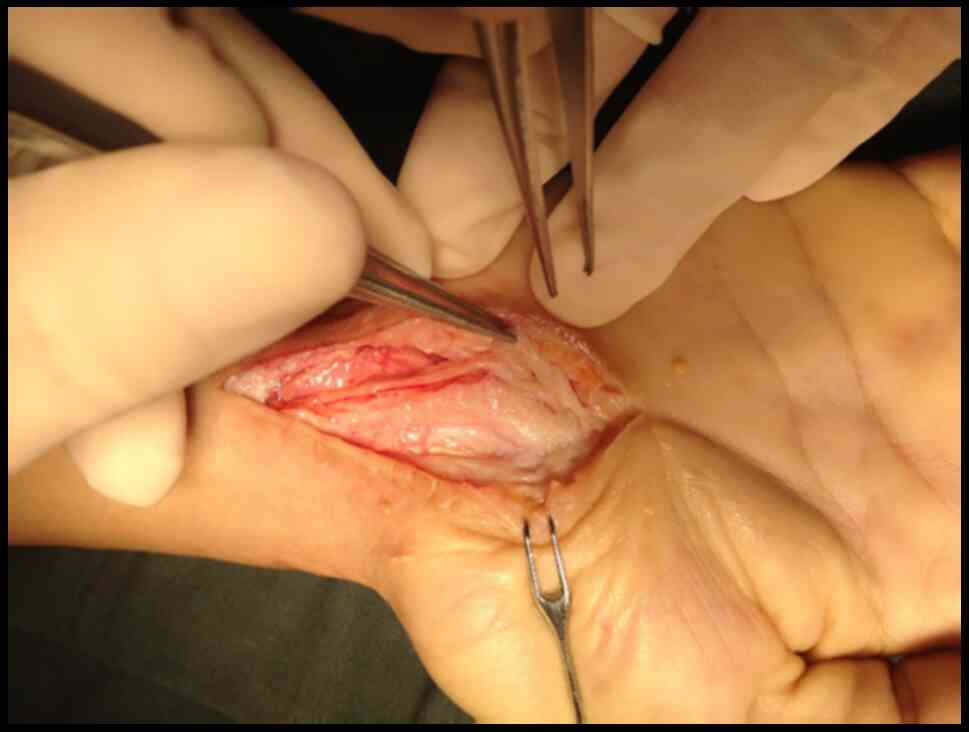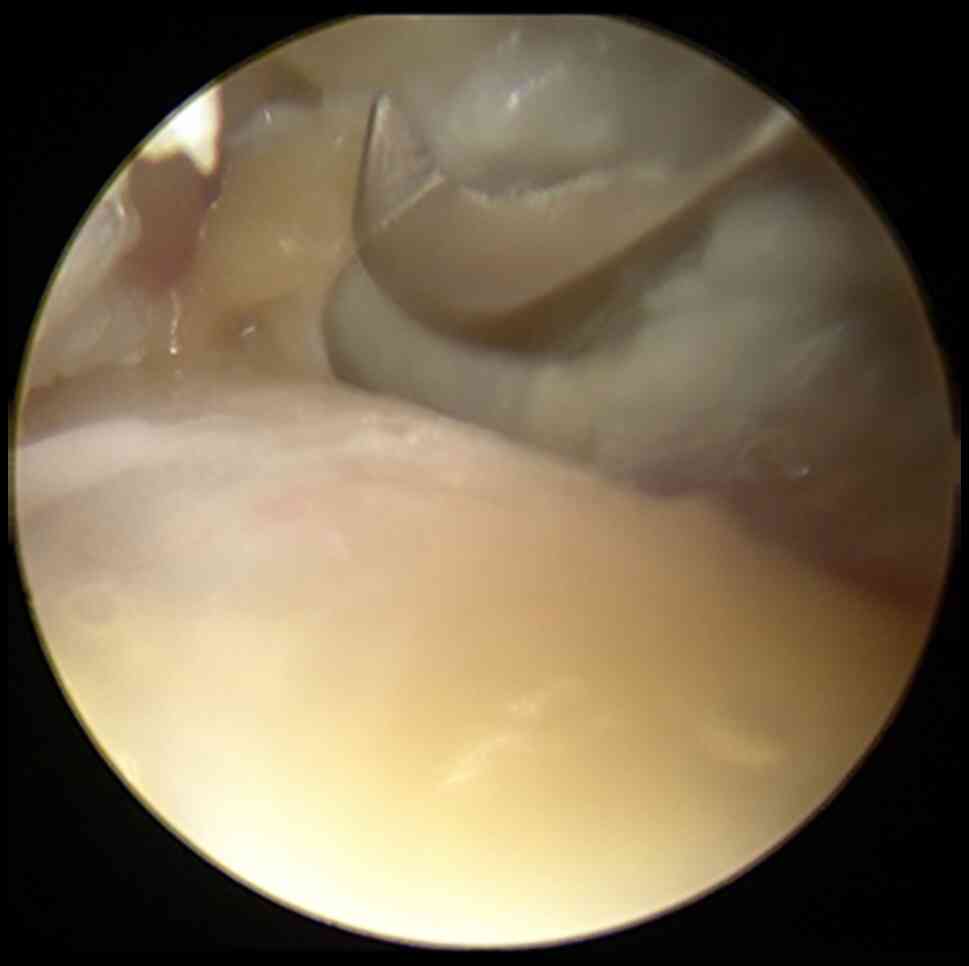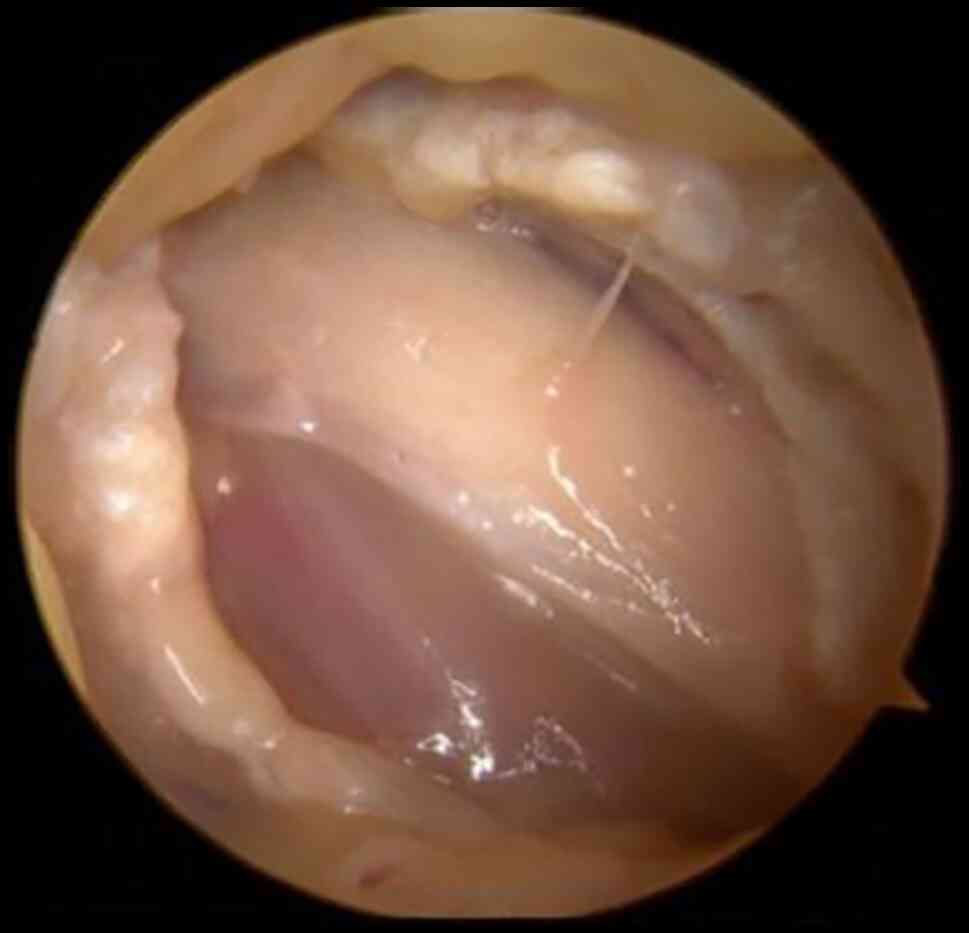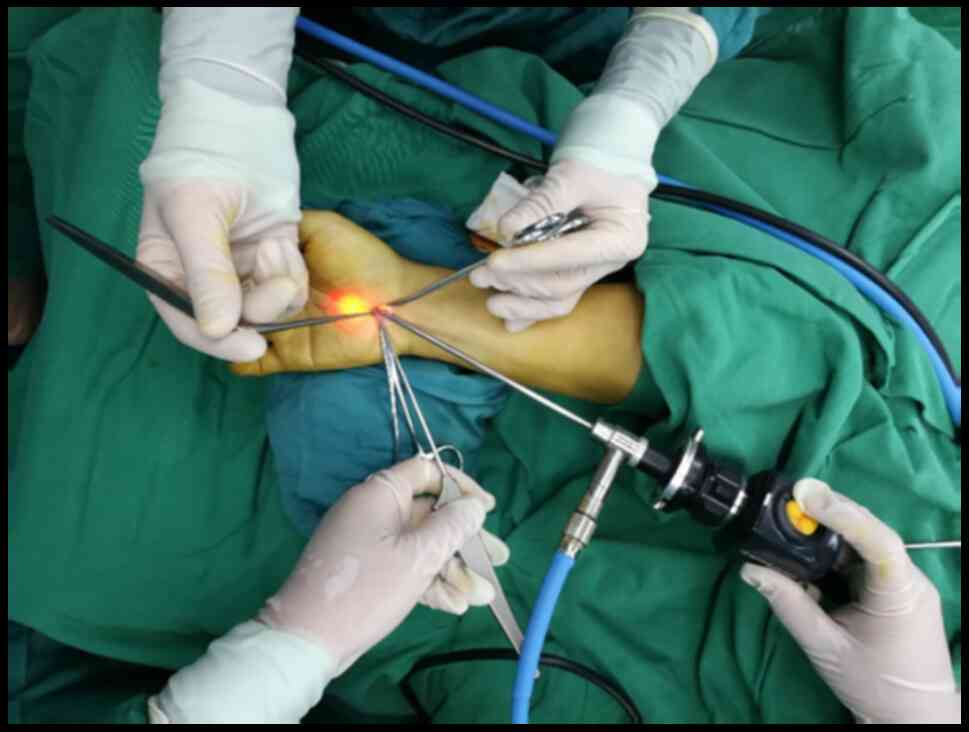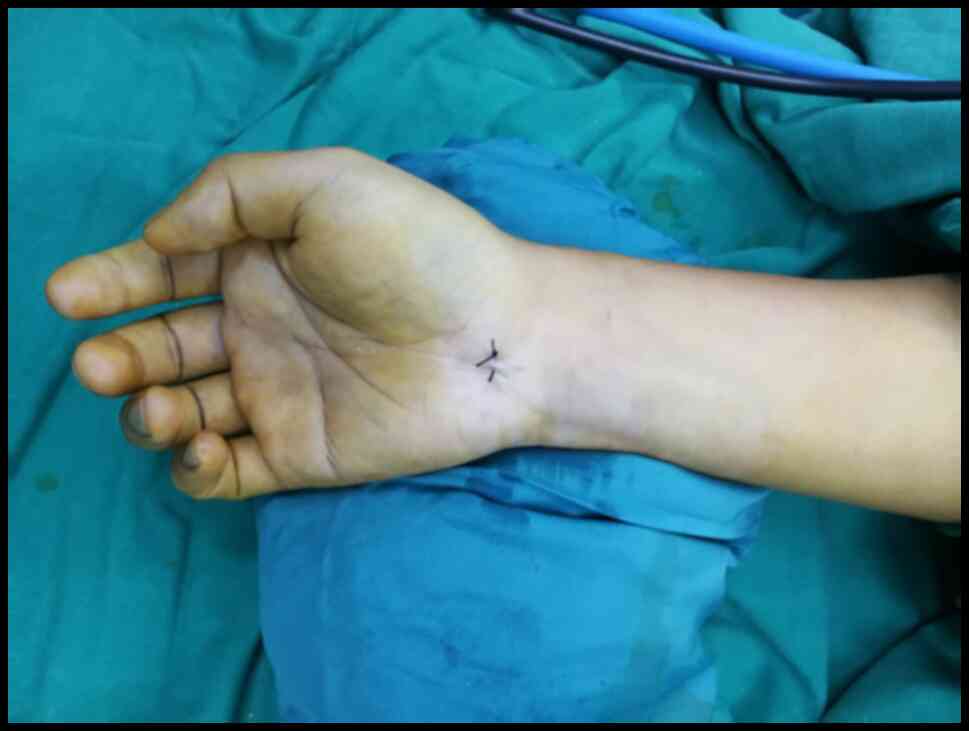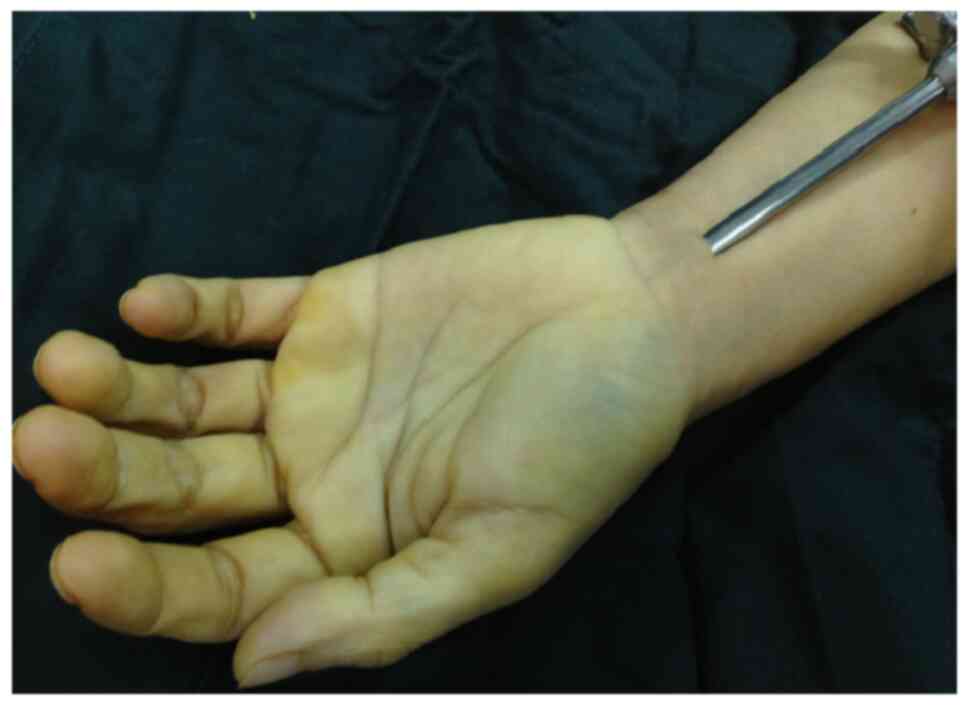|
1
|
Sharief F, Kanmani J and Kumar S: Risk
factors, symptom severity and functional status among patients with
carpal tunnel syndrome. Neurol India. 66:743–746. 2018.PubMed/NCBI View Article : Google Scholar
|
|
2
|
Gelfman R, Melton LJ, Yawn BP, Wollan PC,
Amadio PC and Stevens JC: Long-term trends in carpal tunnel
syndrome. Neurology. 72:33–41. 2009.PubMed/NCBI View Article : Google Scholar
|
|
3
|
Patterson JD and Simmons BP: Outcome
assessment in carpel tunnel syndrome. Hand Clin. 18:359–363.
2002.PubMed/NCBI View Article : Google Scholar
|
|
4
|
Akelman E and Weiss AP: Carpal tunnel
syndrome. Etiology and endoscopic treatment. Orthop Clin North Am.
26:769–778. 1995.PubMed/NCBI
|
|
5
|
Zyluk A and Strychar J: A comparison of
two limited open techniques for carpal tunnel release. J Hand Surg
Br. 31:466–472. 2006.PubMed/NCBI View Article : Google Scholar
|
|
6
|
Kiymaz N, Cirak B, Tuncay I and Demir O:
Comparing open surgery with endoscopic releasing in the treatment
of carpal tunnel syndrome. Minim Invasive Neurosurg. 45:228–230.
2002.PubMed/NCBI View Article : Google Scholar
|
|
7
|
Means KR, Parks BG, Lee SK and Segalman
KA: Release of the transverse carpal ligament alone is associated
with elevated pressure beneath the distal volar forearm fascia in a
cadaver model of carpal tunnel syndrome. J Hand Surg Am.
32:1533–1537. 2007.PubMed/NCBI View Article : Google Scholar
|
|
8
|
Papachristos A and Chow JCY: Endoscopic
carpal tunnel release: Seventeen years' experience with the chow
technique and specific anatomic considerations regarding the volar
aspect of the wrist (SS-61). Arthroscopy. 22(E31)2006.
|
|
9
|
Uchiyama S, Yasutomi T, Fukuzawa T,
Nakagawa H, Kamimura M and Kato H: Reducing neurologic and vascular
complications of endoscopic carpal tunnel release using a modified
chow technique. Arthroscopy. 23:816–821. 2007.PubMed/NCBI View Article : Google Scholar
|
|
10
|
Kawee P, Pravit K and Adisorn P: Carpal
tunnel release by mini palmar incision. Asian Biomed. 5:139–142.
2011.
|
|
11
|
Nagle DJ: Endoscopic carpal tunnel
release. Hand Clin. 18:307–313. 2002.PubMed/NCBI View Article : Google Scholar
|
|
12
|
Okutsu I, Hamanaka I, Chiyokura Y,
Miyauchi Y and Sugiyama K: Intraneural median nerve pressure in
carpal tunnel syndrome. J Hand Surg Br. 26:155–156. 2001.PubMed/NCBI View Article : Google Scholar
|
|
13
|
Sayegh ET and Strauch RJ: Open versus
endoscopic carpal tunnel release: A meta-analysis of randomized
controlled trials. Clin Orthop Relat Res. 473:1120–1132.
2015.PubMed/NCBI View Article : Google Scholar
|
|
14
|
Trumble TE, Diao E, Abrams RA and
Gilbert-Anderson MM: Single portal endoscopic carpal tunnel release
compared with open release: A prospective, randomized trial. J Bone
Joint Surg Am. 84:1107–1115. 2002.PubMed/NCBI View Article : Google Scholar
|
|
15
|
Graham B, Regehr G, Naglie G and Wright
JG: Development and validation of diagnostic criteria for carpal
tunnel syndrome. J Hand Surg Am. 31:919–924. 2006.PubMed/NCBI
|
|
16
|
Gilliatt RW and Meer J: The refractory
period of transmission in patients with carpal tunnel syndrome.
Muscle Nerve. 13:445–450. 1990.PubMed/NCBI View Article : Google Scholar
|
|
17
|
Atroshi I, Gummesson C, Johnsson R,
Ornstein E and Rosén I: Median nerve latency measurement agreement
between portable and conventional methods. J Hand Surg Br.
25:73–77. 2000.PubMed/NCBI View Article : Google Scholar
|
|
18
|
Shinoda J, Hashizume H, McCown C, Senda M,
Nishida K, Doi T and Inoue H: Carpal tunnel syndrome grading system
in rheumatoid arthritis. J Orthop Sci. 7:188–193. 2002.PubMed/NCBI View Article : Google Scholar
|
|
19
|
Macdermid JC, Richards RS, Roth JH, Ross
DC and King GJ: Endoscopic versus open carpal tunnel release: A
randomized trial. J Hand Surg Am. 28:475–480. 2003.PubMed/NCBI View Article : Google Scholar
|
|
20
|
Wewers ME and Lowe NK: A critical review
of visual analogue scales in the measurement of clinical phenomena.
Res Nurs Health. 13:227–236. 1990.PubMed/NCBI View Article : Google Scholar
|
|
21
|
Ciccone W II: Editorial Commentary: What's
Hamada with partial rotator cuff repair? Arthroscopy. 35:351–352.
2019.PubMed/NCBI View Article : Google Scholar
|
|
22
|
Takayama K, Yamada S and Kobori Y:
Clinical effectiveness of mini open superior capsular
reconstruction using autologous tensor fascia lata graft. J
Shoulder Elbow Surg: Sep 30, 2020 (Epub ahead of print). doi:
10.1016/j.jse.2020.09.005.
|
|
23
|
Hamada K, Fukuda H, Mikasa M and Kobayashi
Y: Roentgenographic findings in massive rotator cuff tears. A
long-term observation. Clin Orthop Relat Res. 92–96.
1990.PubMed/NCBI
|
|
24
|
Zamora CA, Zamora MA, Soto JD and Garcés
MA: Myoepithelioma of the hand and carpal tunnel: An unusual cause
of median nerve compression. J Clin Ultrasound. 39:44–47.
2010.PubMed/NCBI View Article : Google Scholar
|
|
25
|
Mohamed A, Rosalie S, Taylor K, Fink M,
Coombs C, Ryan M and Kornberg A: Carpal tunnel syndrome secondary
to ganglion cyst in a child. J Child Neurol. 26:630–633.
2011.PubMed/NCBI View Article : Google Scholar
|
|
26
|
Robinson AJ, Haj Basheer M and Herbert K:
An unusual cause of carpal tunnel syndrome. J Plast Reconstr
Aesthet Surg. 63:e788–e791. 2010.PubMed/NCBI View Article : Google Scholar
|
|
27
|
Yücetaş SC and Yildirim A: Comparative
results of standard open and mini open, knifelight
instrument-assisted carpal tunnel release. J Neurol Surg A Cent Eur
Neurosurg. 74:392–399. 2013.PubMed/NCBI View Article : Google Scholar
|
|
28
|
Gurpinar T, Polat B, Polat AE, Carkci E,
Kalyenci AS and Ozturkmen Y: Comparison of open and endoscopic
carpal tunnel surgery regarding clinical outcomes, complication and
return to daily life: A prospective comparative study. Pak J Med
Sci. 35:1532–1537. 2019.PubMed/NCBI View Article : Google Scholar
|
|
29
|
Trehan SK, Lyman S, Ge Y, Do HT and
Daluiski A: Incidence of nerve repair following endoscopic carpal
tunnel release is higher compared to open release in New York
State. HSS J. 15:143–146. 2019.PubMed/NCBI View Article : Google Scholar
|
|
30
|
Worseg AP, Kuzbari R, Korak K, Höcker K,
Wiederer C, Tschabitscher M and Holle J: Endoscopic carpal tunnel
release using a single-portal system. Brit J Plast Surg. 49:1–10.
1996.PubMed/NCBI View Article : Google Scholar
|
|
31
|
Okutsu I, Ninomiya S, Takatori Y and Ugawa
Y: Endoscopic management of carpal tunnel syndrome. Arthroscopy.
5:11–18. 1989.PubMed/NCBI View Article : Google Scholar
|
|
32
|
Chow JC and Hantes ME: Endoscopic carpal
tunnel release: Thirteen years' experience with the Chow technique.
J Hand Surg Am. 27:1011–1018. 2002.PubMed/NCBI View Article : Google Scholar
|
|
33
|
Chow JC: Endoscopic release of the carpal
ligament for carpal tunnel syndrome: 22-month clinical result.
Arthroscopy. 6:288–296. 1990.PubMed/NCBI View Article : Google Scholar
|
|
34
|
Okutsu I, Ninomiya S, Natsuyama M,
Takatori Y, Inanami H, Kuroshima N and Hiraki S: Subcutaneous
operation and examination under nuiversal endoscope. Nihon
Seikeigeka Gakkai Zasshi. 61:491–498. 1987.PubMed/NCBI(In Japanese).
|
|
35
|
Hansen TB and Majeed HG: Endoscopic carpal
tunnel release. Hand Clin. 30:47–53. 2014.PubMed/NCBI View Article : Google Scholar
|
|
36
|
Tuzuner S, Sherman GM, Ozkaynak S and
Ozcanli H: Endoscopic carpal tunnel release: Modification of
Menon's technique and data from 191 cases. Arthroscopy. 20:721–727.
2004.PubMed/NCBI View Article : Google Scholar
|
|
37
|
Agee JM, Peimer CA, Pyrek JD and Walsh WE:
Endoscopic carpal tunnel release: A prospective study of
complications and surgical experience. J Hand Surg Am. 20:165–172.
1995.PubMed/NCBI View Article : Google Scholar
|
|
38
|
Michelotti B, Romanowsky D and Hauck RM:
Prospective, randomized evaluation of endoscopic versus open carpal
tunnel release in bilateral carpal tunnel syndrome: An interim
analysis. Ann Plast Surg. 73 (Suppl 2):S157–S160. 2014.PubMed/NCBI View Article : Google Scholar
|















